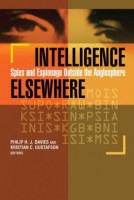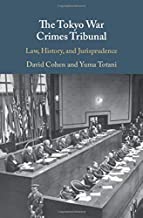 Editors: Philip H.J. Davies and Kristian C. Gustafson
Editors: Philip H.J. Davies and Kristian C. Gustafson
Publisher: Georgetown University Press – 313 pages
Book Review by: Deekay Daulat
Intelligence gathering is done not just in the United States, China and the Soviet Union that we get usually news of thru the media of mass communication. It also takes place in European countries and a lot of other places that most of us are probably not aware of.
And we do not know where else, what information is gathered, in what forms, through what means, of what kind, and in what volumes and frequencies.
This book answers those questions and takes closer looks in some countries where intelligence is gathered on various activities.
Below is a list of countries and the world’s regions where intelligence is gathered, according to the editors of this book Philip H.J. Davies and Kristian C. Gustafson who gathered and compiled data provided by 16 contributors to this book. The contributors are named at the end of this book review and their brief profiles are provided at the end of this book.
While I am quite certain that intelligence-gathering activities go on in other countries besides the ones mentioned here, these are the areas named in this study: Arab world, Argentina, Finland, China, Ghana, India, Indonesia, Iran, Japan, Pakistan, Russia, Sweden, and United States.
This book looks at intelligence gathering methods and practices outside the Western world (except two countries in Europe) through local perspectives with material presented in 15 chapters organized into four sections:
- Part I. Introduction and Theory
- Part II. Intelligence Culture outside the Anglosphere
- Part III. Current Practice and Theory
- Part IV. Conclusion
Parts I and II. What are the main topics covered that you will find in these sections? It is: comparative study of intelligence and political culture in Part I; the historical thrust of Chinese intelligence (subversive information); the original surveillance state in Kautilya’s Arthashastra in India; Byzantine influences on Russian intelligence; and origins of Islamic intelligence culture in Part II.
Part III has coverage of intelligence history and activities in numerous countries. It discusses Pakistan’s inter-services intelligence; Iranian intelligence organizations; Indonesia’s intelligence and security-sector reform; a reconstruction of Japanese intelligence; Ghana’s democratic intelligence culture; Argentina’s reforms in its intelligence community; intelligence the middle way in Sweden (one of only two European countries covered, with Finland, in this book); Finland’s economic espionage, intelligence culture and security intelligence service.
Part IV provides the Conclusion with an article on legacies, identities, improvisation and innovations of intelligence.
What is unique about this book is that it is the first study of comparative methods of intelligence-gathering in countries outside of the Anglosphere and the greater-European mainstream.
People who are already familiar with intelligence activities, their history and origins, methods and current practices within some countries and regions contributed the facts and figures they discovered or already knew, along with their insight, to make this study useful and valuable.
Lists of reference are provided at the end of each essay in a Notes section, for further explanation and study.
Philip H.J. Davies is a senior lecturer and director of Brunei University’s Center for Intelligence and Security Studies in the United Kingdom
Kistian C. Gustafson is a lecturer and deputy director of Brunei University’s Center for Intelligence and Security Studies.
Contributors: William Agrell, Emmanuel Kwesi Aning, Abdulaziz A. Al-Asmari, Emma Birikorang, Philip H.J. Davies, Eduardo E. Estevez, Peter Gill, Kristian C. Gustafson, Lauri Holmstrom, Robert Johnson, Ken Kotani, Ernest Ansah Lartey, Ralph D. Sawyer, Carl Anthony Wege, Stephen Welch, and Lee Wilson.







